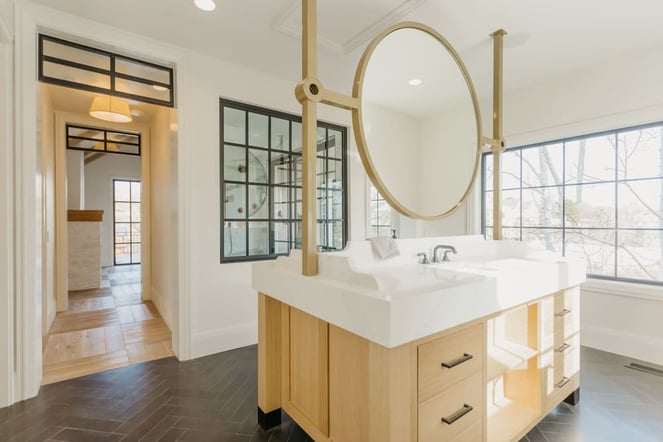%20(3).jpg)
Construction Loans for Custom Home Building: All You Need to Know
Components of Your Loan
Everyone’s financing needs and the rate for their construction loan will be a bit different. Your project’s ultimate price tag, your nest egg, and the rates your lender offers will differ from the next client on our roster. You must involve your financial adviser and prospective lenders early to examine rates, fees, closing costs, and potential discount points to identify your best financing options. Your custom home builder may have recommendations or, better yet, offer in-house financing options that can streamline the process by involving teams that are used to working together.
- Land loans- Most lending agencies offer land loans. Check with your preferred lender to ensure that they offer Utah land loans, or consult a realtor who specializes in vacant land for new construction for their insight into the best local lenders. Land loans typically require a more sizable down payment than a traditional mortgage and include rates 1-2 percent above prime.
- Construction loans- The loan that provides your construction funds are short-term. You must secure a mortgage after construction or select a construction loan that automatically converts into a traditional mortgage after the build. Both construction loan options carry slightly higher rates than a comparable conventional mortgage.
- Mortgage- Traditional mortgage companies that do not offer construction loans are pleased to buy the loan for your outstanding balance after you have taken occupancy.
How Do You Finance A Custom Home?
Loans for new construction are structured differently than traditional mortgages. Unlike mortgages on existing homes, your construction and lot are financed separately. There are different terms and interest rates for lot loans and occupied property. Financing your new construction is also a unique process. New construction loans are usually short-term. A traditional mortgage provider usually buys your debt after construction. This consolidates payments on your lot and home. Some new construction loans convert to a mortgage after the build is over, whereas the owner must initiate the process in other cases. Consult your financial team to make the best choice for your situation.
What Is the Process for Financing a Custom Home?
Many people aren’t sure how to apply for a construction loan. Getting a loan for building a custom home requires a few more steps and a slightly different process than securing a traditional mortgage. This isn’t always a clear step-by-step process. Sometimes the order of events is a little different because each project and financial situation is unique.
-
Get pre-approval from your lender(s) so you know your budget for your lot and your custom home.
-
Find a lot and secure your lot loan.
-
Sign a contract with your builder to create a custom home. Steps 2 and 3 can happen in either order.
-
Once you have a good idea of what your house will cost to build, you can use your builder’s detailed plans and timelines and your financial documents to finalize your construction loan.
-
Pay for the materials and labor to build your home with your construction loan.
-
Convert your land loan and construction loan to a lower-interest mortgage.
-
Pay your monthly mortgage as usual.
Different Types of Construction Loans
All construction loans hold a higher interest rate than the prevailing mortgage rate at the moment and possess more stringent qualifying standards for buyers. That’s to cover the risk inherent in financing new construction. Not every project makes it to completion.
Construction-to-Permanent Loans
Pros: One closing cost locks in the current rate and consolidates the financing process.
Cons: May lock in a higher interest rate
Construction-Only Loans
Pros: May provide a lower interest rate than comparable construction-to-permanent loans in the same market space.
Cons: The buyer must shop and secure a mortgage after construction or pay the loan balance off completely. You may have trouble qualifying for a mortgage if your circumstances change drastically between your construction loan and your mortgage application. You must also pay a second set of closing costs on your mortgage.
Unique Aspects of Construction Loans
When You Draw
You don’t have access to all of the funds in your construction loan the moment you receive it. You usually receive lump sums based on the stage your project is completing. For example, you may draw when framing begins and again when the roof is installed.
What You Pay and When
Construction loans typically require paying only interest until the project is over. You don’t pay the principal until you’re living in your home. You also usually pay interest only on the part of the project you have drawn funding for. If your bank hasn’t paid for the finishing yet, you aren’t paying the interest for that project stage.
Oversight
Your lender has an interest in your project completing as planned and on schedule. Expect 4-6 extra visits from an inspector during your build, usually coinciding with the next big draw to finance your home construction.
10X Makes Your Custom Build a Breeze
We’d love to show you how fun, easy, and rewarding building a custom home can be. Our Utah County homes are monuments to our client’s realized dreams, and we’re honored to be a part of their story. Connect with us today to tell us about your custom home dream.



